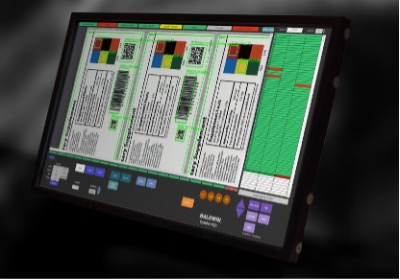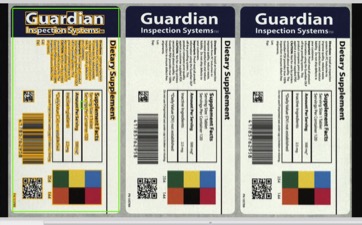As the print industry closed the books on 2022, we were reeling from inflation-induced challenges. The raw materials essential to the printing process, particularly paper, but also ink and other supplies, were difficult to find and expensive to purchase. Labor costs were up, yet the industry struggled to recruit the next generation of employees. Passing price increases to customers based on rising production costs and inflation also became more complex, challenging print operation economics.
Fast forward to today. There have been improvements. Inflation is down from its peak, which should put less pressure on material and labor costs. The May 2023 update from PPI Pulp & Paper Week, reported that paper mills were seeing weaker demand in the second quarter as printers worked through existing inventories built up during the recent scarcity. Pricing continues to be a concern for 36% of the print service providers that took part in WhatTheyThink’s 2023 Printing Outlook research. Changing prices to preserve or increase margins while raw materials costs continue to shift is tricky when your customers are concerned about the near-term economic and business outlook.
Our industry may have reached a peak for these operational challenges, but they are far from gone. By optimizing costs and resolving bottlenecks, you can bring more efficiency to your business, resetting your print economics. It is time to get more from your print production— more for your employees, more production time, more sellable work, and more from your materials. Process automation technologies from Baldwin help you focus on getting more.
Get More for Your Employees
No matter how advanced our technology becomes, employees remain the most valuable part of any print operation. Instead of thinking about how to get more from your employees, it is time to start thinking about how to get more for your employees—and that requires a shift in both mindset and approach
The changing global workforce in the print industry requires new tactics and techniques for recruiting, hiring, onboarding, training, and nurturing employees. Generationally, the workforce has never been more educated and more technology-savvy. Millennials are the most significant percentage of employees, with Gen Z expected to take the top spot by 2030. In parallel, Baby Boomers and Gen Xers are living longer and extending their working years, but also building their retirement plans that can result in experience gaps in the business. While the U.S. Bureau of Labor Statistics (BLS) forecasts a 10% increase in individuals over 55 years of age in the workforce from 2021–2031 and an eye-popping 93% for those over 75, these people will retire, and there will be gaps to fill. The BLS notes that the average age of workers in the print industry today is 49, so the clock is ticking.
There is a competitive advantage in finding new talent and retaining existing talent when the work is rewarding. Work that is not repetitive but engaging. For the printing industry, that means offloading or augmenting repetitive, laborious tasks using both digital and physical automation. Software automation is perfect for streamlining frontend and backend job preparation and administrative tasks, but physical automation for equipment is equally important.
Look across your shop and identify where automation could free staff and open their doors to more fulfilling roles that add value. From automated equipment cleanups to energy-reducing infrared dryers, you can change the print economics by bringing process automation to often overlooked areas of print production processes across all printing technologies.
Get More Production Time
Over a quarter of respondents to the WhatTheyThink 2023 Business Outlook survey cited increasing plant productivity as one of the biggest challenges. Increasing productivity is essential because it adds the capacity to produce more work and control bottom-line costs.
The proof is in companies that have already implemented process automation solutions, like Westrock. They experienced the value of increasing productivity at their North Carolina plant by replacing the OEM-provided automated offset blanket and cylinder cleaning solution. With Baldwin’s PREPAC® cleaning system increased production time, saving 70 hours annually just in the time needed for press washups. According to calculations by Westrock staff, the solution saved over $100,000 in offset blanket and wash solution costs in the first year.
The enhanced productivity increases capacity without adding additional machines. Every incremental savings resulting from process automation makes it possible to sell more work to increase the bottom line.
Get More Sellable Print

Guardian PQV 100% Print Inspection from Baldwin Vision Systems.
Maximizing material usage is paramount across all printing segments. Customers are increasingly concerned with the sustainability of materials, and printers want to minimize waste to improve profitability. The key is to identify and correct issues in real time, especially before the work continues to subsequent processes. A solid quality control program embedded into your production processes is the starting point, but you can make them more efficient with on or near-press inspection systems.

Object-based Inspection.
Inspection systems like PVQ 4.0 for narrow and mid-web label production from Baldwin Vision Systems use sophisticated software and camera systems to identify print defects in real time. Operators use Wizard-iQ to identify individual elements of the design, from text to barcodes, within seconds. The system then monitors for print defects and color shifts throughout the print run, ensuring consistency with a micrometer level of precision throughout the run and alerting operators to any issues.
Get More from Your Materials
While not a common practice in offset printing, storing and reusing plates is more common in flexographic printing for packaging applications. Reusing plates is more sustainable and reduces the plate costs for repeat work. To reuse the flexo plates, they must be cleaned, dried, and properly stored, which traditionally required significant labor in addition to cleaning solution and consumables.
The FlexoCleanerBrush from Baldwin improves the cost dynamics for flexo plate reuse by minimizing the time and costs associated with cleaning and drying. The system can clean and dry every plate in each printing unit of the flexo press in under four minutes. Cleaning can also be done at the start of the print run or at intervals during the run to assist press operators with removing hickeys or when running high-pigment inks. A clean plate during the print run minimizes print defects and minimizes waste. The system allows flexo printers to extend the plate life and get more from their materials.
The printing industry may not be able to control the overall economic conditions or the supply of labor and materials. However, print service providers can get more from their operations through smart process automation that optimizes material usage, streamlines print processes, and empowers the most valuable resource—their employees.
Learn more about how process automation can improve the economics of your print operation at https://printenomics.com/.















Discussion
Only verified members can comment.